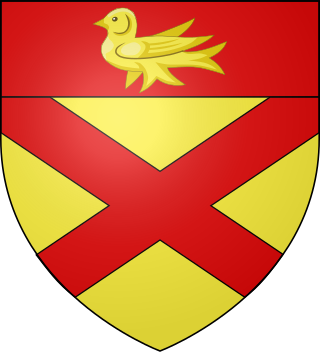
Baron Aberdare, of Duffryn in the County of Glamorgan, is a title in the Peerage of the United Kingdom. It was created on 23 August 1873 for the Liberal politician Henry Bruce. He served as Home Secretary from 1868 to 1873.

Henry Austin Bruce, 1st Baron Aberdare, was a British Liberal Party politician, who served in government most notably as Home Secretary (1868–1873) and as Lord President of the Council.
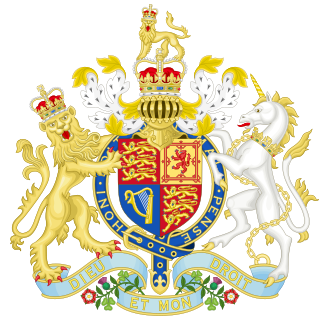
The Peerage Act 1963 is an Act of the Parliament of the United Kingdom that permits female hereditary peers and all Scottish hereditary peers to sit in the House of Lords and allows newly inherited hereditary peerages to be disclaimed.

Baron Freyberg, of Wellington in New Zealand and of Munstead in the County of Surrey, is a title in the Peerage of the United Kingdom. It was created in 1951 for the prominent military commander Lieutenant-General Sir Bernard Freyberg. He served as Governor-General of New Zealand from 1946 to 1952. His only son, the second Baron, was a Colonel in the Grenadier Guards.

Baron Glentoran, of Ballyalloly in the County of Down, is a title in the Peerage of the United Kingdom. It was created on 8 July 1939 for the Unionist politician Herbert Dixon. In 1950 he also succeeded his elder brother as third Baronet, of Ballymenock. His son, the second Baron, was also a politician and served as the last Speaker of the Senate of Northern Ireland. As of 2017 the titles are held by the latter's son, the third Baron, who succeeded in 1995. He is a former Olympic bobsleigh gold medallist as well as a soldier, businessman and politician. Lord Glentoran was one of the ninety elected hereditary peers who remain in the House of Lords after the passing of the House of Lords Act 1999, and sat on the Conservative benches until his June 2018 retirement under the House of Lords Reform Act 2014.
Baron Grantchester, of Knightsbridge in the City of Westminster, is a title in the Peerage of the United Kingdom. It was created on 30 June 1953 for the banker and Liberal politician Alfred Suenson-Taylor. As of 2019, the title is held by his grandson, the third Baron, who succeeded his father in 1995. In 2003, he replaced the deceased Lord Milner of Leeds as one of the ninety elected hereditary peers that are allowed to remain in the House of Lords after the passing of the House of Lords Act 1999. Lord Grantchester sits on the Labour benches.
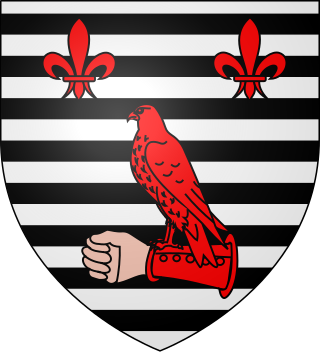
Baron Astor of Hever, of Hever Castle in the County of Kent, is a title in the Peerage of the United Kingdom. It was created in 1956 for John Jacob Astor, a prominent newspaper proprietor and Conservative politician. He was the fourth child of William Waldorf Astor, 1st Viscount Astor. Lord Astor of Hever was succeeded in 1971 by his eldest son, the second Baron, who served as Lord Lieutenant of Kent between 1972 and 1982.
Baron Mancroft, of Mancroft in the City of Norwich, is a title in the Peerage of the United Kingdom. It was created in 1937 for the Conservative politician Sir Arthur Samuel, 1st Baronet. He had already been created a Baronet, of Mancroft in the City of Norwich in the County of Norfolk, in 1932. His son, the second Baron, was also a Conservative politician. In 1925 he assumed by deed poll the surname of Mancroft. As of 2010 the titles are held by the latter's only son, the third Baron, who succeeded in 1987. He is one of the ninety elected hereditary peers that remain in the House of Lords after the passing of the House of Lords Act of 1999. Lord Mancroft sits on the Conservative benches.

Baron Rea, of Eskdale in the County of Cumberland, is a title in the Peerage of the United Kingdom. It was created in 1937 for the businessman and Liberal politician Sir Walter Rea, 1st Baronet, who had earlier represented Scarborough, Bradford North and Dewsbury in the House of Commons. He had already been created a Baronet, of Eskdale in the County of Cumberland, in 1935. He was succeeded by his eldest son, the second Baron. During the Second World War he served as personal staff officer to Brigadier Colin Gubbins, the Head of SOE, a key British intelligence and guerrilla operations agency. Lord Rea served as Leader of the Liberal Party in the House of Lords from 1955 to 1967. His daughter, the Right Hon. Ann Felicity Rea, married SOE veteran Malcolm Munthe in 1945. His nephew, the third Baron, who succeeded in 1981, was a physician. He was one of the ninety elected hereditary peers elected to remain in the House of Lords after the passing of the House of Lords Act 1999, and sat on the Labour benches. As of 2020 the titles are held by his son, the fourth Baron, who succeeded his father in that year.
In the United Kingdom, life peers are appointed members of the peerage whose titles cannot be inherited, in contrast to hereditary peers. Life peers are appointed by the monarch on the advice of the prime minister. With the exception of the Dukedom of Edinburgh awarded for life to Prince Edward in 2023, all life peerages conferred since 2009 have been created under the Life Peerages Act 1958 with the rank of baron and entitle their holders to sit and vote in the House of Lords, presuming they meet qualifications such as age and citizenship. The legitimate children of a life peer appointed under the Life Peerages Act 1958 are entitled to style themselves with the prefix "The Honourable", although they cannot inherit the peerage itself. Prior to 2009, life peers of baronial rank could also be so created under the Appellate Jurisdiction Act 1876 for senior judges.

The Lords Temporal are secular members of the House of Lords, the upper house of the British Parliament. These can be either life peers or hereditary peers, although the hereditary right to sit in the House of Lords was abolished for all but ninety-two peers during the 1999 reform of the House of Lords. The term is used to differentiate these members from the Lords Spiritual, who sit in the House as a consequence of being bishops in the Church of England.

Rodney Elton, 2nd Baron Elton, was a British Conservative politician and member of the House of Lords.

Alastair John Lyndhurst Bruce, 5th Baron Aberdare,, is a British nobleman, and since 2009 a crossbench hereditary peer elected under the House of Lords Act 1999.
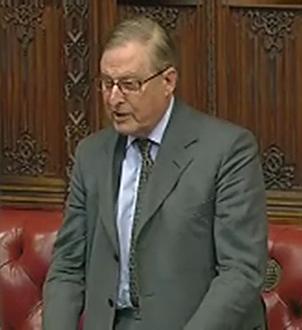
Thomas Edward Bridges, 2nd Baron Bridges,, was a British hereditary peer and diplomat.

David Antony Fromanteel Lytton Cobbold, 2nd Baron Cobbold,, was a British hereditary peer and member of the House of Lords.

John Dawson Eccles, 2nd Viscount Eccles,, is a British Conservative peer and businessman. He is one of the ninety-two hereditary peers elected to remain in the House of Lords after the passing of the House of Lords Act 1999.
Malcolm McEacharn Mitchell-Thomson, 3rd Baron Selsdon was a British peer, banker and businessman. He sat in the House of Lords from 1963 to 2021, having been elected as one of the 90 hereditary peers who retained their seats after the passing of the House of Lords Act 1999.

Roger Mynors Swinfen Eady, 3rd Baron Swinfen, was a British politician and philanthropist, who was one of the ninety two hereditary peers elected to remain in the House of Lords following the passing of the House of Lords Act 1999. He sat as a Conservative.
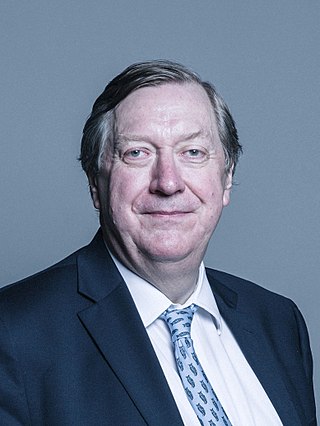
Geoffrey Robert James Borwick, 5th Baron Borwick, is a British businessman, hereditary peer and member of the House of Lords.

Roualeyn Robert Hovell-Thurlow-Cumming-Bruce, 9th Baron Thurlow, is a British hereditary peer and chartered surveyor who sits as a crossbench member of the House of Lords.

















